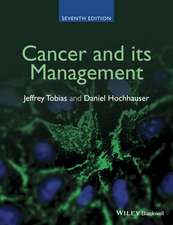Selective Activation of Drugs by Redox Processes: NATO Science Series A:, cartea 198
Editat de GE ADAMS, A. Breccia, E. M. Fielden, P. Wardmanen Limba Engleză Paperback – 21 oct 2012
Din seria NATO Science Series A:
- 15%
 Preț: 656.58 lei
Preț: 656.58 lei - 15%
 Preț: 655.13 lei
Preț: 655.13 lei - 15%
 Preț: 678.35 lei
Preț: 678.35 lei -
 Preț: 397.38 lei
Preț: 397.38 lei - 5%
 Preț: 377.87 lei
Preț: 377.87 lei -
 Preț: 397.76 lei
Preț: 397.76 lei - 18%
 Preț: 1232.41 lei
Preț: 1232.41 lei - 5%
 Preț: 731.64 lei
Preț: 731.64 lei -
 Preț: 413.15 lei
Preț: 413.15 lei - 15%
 Preț: 649.22 lei
Preț: 649.22 lei - 5%
 Preț: 369.45 lei
Preț: 369.45 lei -
 Preț: 407.56 lei
Preț: 407.56 lei - 5%
 Preț: 2162.19 lei
Preț: 2162.19 lei -
 Preț: 407.39 lei
Preț: 407.39 lei -
 Preț: 396.40 lei
Preț: 396.40 lei - 15%
 Preț: 663.93 lei
Preț: 663.93 lei -
 Preț: 387.38 lei
Preț: 387.38 lei -
 Preț: 393.13 lei
Preț: 393.13 lei -
 Preț: 398.35 lei
Preț: 398.35 lei -
 Preț: 401.24 lei
Preț: 401.24 lei - 15%
 Preț: 678.81 lei
Preț: 678.81 lei -
 Preț: 395.09 lei
Preț: 395.09 lei - 18%
 Preț: 952.40 lei
Preț: 952.40 lei - 15%
 Preț: 654.43 lei
Preț: 654.43 lei -
 Preț: 402.00 lei
Preț: 402.00 lei -
 Preț: 401.24 lei
Preț: 401.24 lei - 15%
 Preț: 655.27 lei
Preț: 655.27 lei -
 Preț: 394.71 lei
Preț: 394.71 lei -
 Preț: 384.48 lei
Preț: 384.48 lei - 5%
 Preț: 395.61 lei
Preț: 395.61 lei - 5%
 Preț: 1421.57 lei
Preț: 1421.57 lei - 15%
 Preț: 651.34 lei
Preț: 651.34 lei -
 Preț: 400.10 lei
Preț: 400.10 lei -
 Preț: 386.99 lei
Preț: 386.99 lei - 5%
 Preț: 386.11 lei
Preț: 386.11 lei -
 Preț: 403.91 lei
Preț: 403.91 lei - 15%
 Preț: 651.51 lei
Preț: 651.51 lei -
 Preț: 393.90 lei
Preț: 393.90 lei - 5%
 Preț: 376.43 lei
Preț: 376.43 lei -
 Preț: 400.26 lei
Preț: 400.26 lei - 5%
 Preț: 388.84 lei
Preț: 388.84 lei -
 Preț: 400.65 lei
Preț: 400.65 lei - 5%
 Preț: 740.58 lei
Preț: 740.58 lei - 18%
 Preț: 1225.16 lei
Preț: 1225.16 lei - 5%
 Preț: 386.46 lei
Preț: 386.46 lei -
 Preț: 421.82 lei
Preț: 421.82 lei
Preț: 378.07 lei
Preț vechi: 397.97 lei
-5% Nou
Puncte Express: 567
Preț estimativ în valută:
72.34€ • 75.72$ • 60.21£
72.34€ • 75.72$ • 60.21£
Carte tipărită la comandă
Livrare economică 31 martie-14 aprilie
Preluare comenzi: 021 569.72.76
Specificații
ISBN-13: 9781461366799
ISBN-10: 1461366798
Pagini: 376
Ilustrații: XI, 361 p.
Dimensiuni: 178 x 254 x 20 mm
Greutate: 0.65 kg
Ediția:1990
Editura: Springer Us
Colecția Springer
Seria NATO Science Series A:
Locul publicării:New York, NY, United States
ISBN-10: 1461366798
Pagini: 376
Ilustrații: XI, 361 p.
Dimensiuni: 178 x 254 x 20 mm
Greutate: 0.65 kg
Ediția:1990
Editura: Springer Us
Colecția Springer
Seria NATO Science Series A:
Locul publicării:New York, NY, United States
Public țintă
ResearchCuprins
Characteristics of Hypoxic Cells that Enhance their Susceptibility to Chemical Injury.- Prediction and Measurement of Redox Properties of Drugs and Biomolecules.- Metal-Catalyzed Redox Processes in Biological Systems and Drug Activation.- Redox Systems Generated by Electro-chemical Oxidations and Reductions.- The Rôle of DNA Damage in the Bioreductive Action of 2-Nitroimidazoles.- Redox Properties of Radiation Induced Free Radicals.- Reduction of Bleomycin-Fe by Reductases and Active Oxygen Formation.- Redox Activation of Drugs by the Red Blood Cell Membrane.- Induction of Stress Proteins and Drug Resistance by Hypoxia and Applications of Magnetic Resonance Spectroscopy and Cryospectrophotometry for Detecting Hypoxia in Tumors.- Mechanisms of Activation of Mitomycin C and AZQ in Aerobic and Hypoxic Mammalian Cells.- Molecular Interactions and Biological Effects of the Products of Reduction of Nitroimidazoles.- Redox Activation of Benzotriazine N-oxides: Mechanisms and Potential as Anticancer Drugs.- Nitroacridines and Nitroquinolines as DNA-affinic Hypoxia-selective Cytotoxins.- Metabolic Effects of Hypoxic Cell Sensitizers.- Does Ro-03–8799 Concentration in Human Tumour Xenografts Predict Radiosensitization? Comparison with SR-2508.- Enzyme-directed Bioreductive Drug Development.- Improved Treatment of Tumours in vivo by Combining the Bioreductive Drug, RSU-1069, Hydralazine and Hyperthermia.- Assessment of Bioreductive Drug Toxicity in vitro and in Experimental Tumours in vivo.- Activity of Bioreductive Agents in Human and Rodent Tumor Cells.- The Control of Tumour Oxygenation in Mice: The Importance of Tumour Site.- Critical Events in the Toxicity of Redox Active Drugs.- The Reductive Activation of Nitroimidazoles; Modification by Oxygen and other Redox-activeMolecules in Cellular Systems.- Fluorescent Probes for Hypoxia: Chemical Aspects.- Toxicity of Metal Complexes with Radiosensitizing Properties.- Effects on DNA of Bioreducible Nitroimidazole and Benzotriazine Drugs.- Response of Repair and Reduction Deficient Mutants to Agents Requiring Bioreduction.- Bioreductive Drugs and Radiation: Pharmacokinetics and Clinical Trials of Etanidazole Radiosensitizer.- The Oncogenic Potential of Bioreductive Drugs.- Adduct Formation by 2-Nitroimidazole in Mammalian Cells: Optimization of Markers for Tissue Oxygenation.- Tumour Blood Flow and its Modulation: Implications for Bioreductive Drug Activity in vivo.- Poster Presentations.- Participants.








